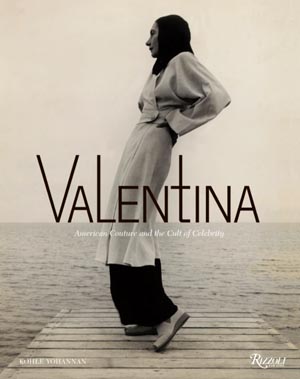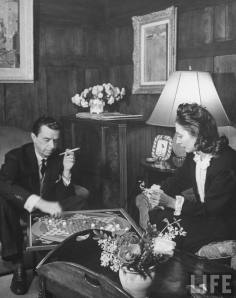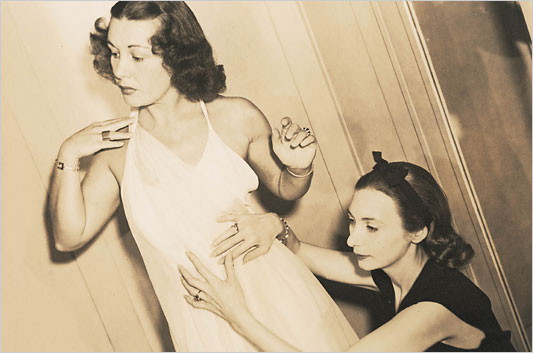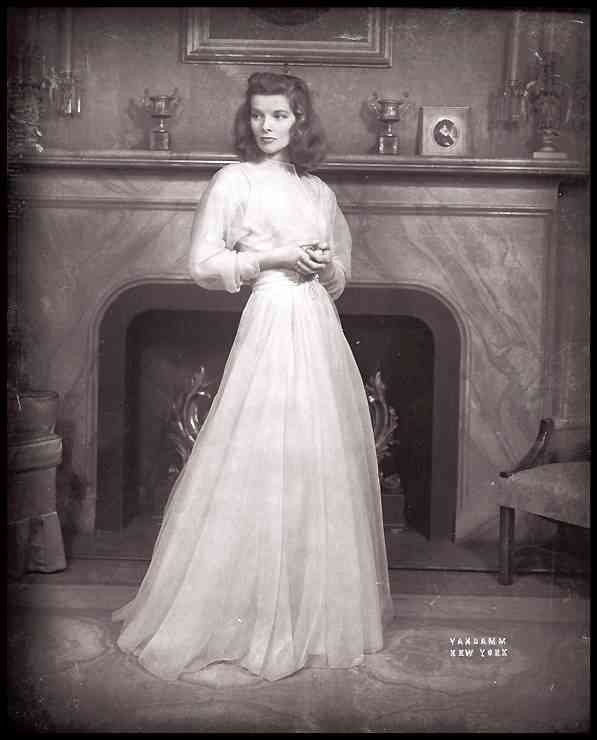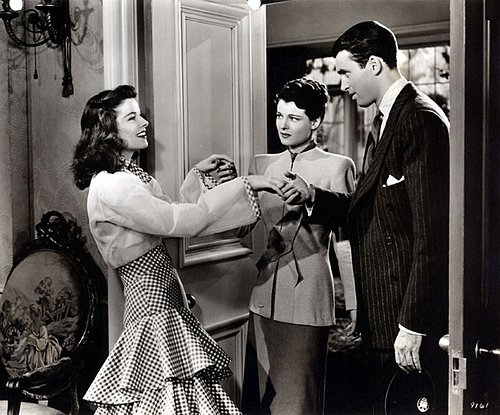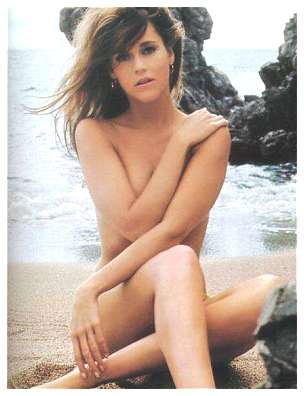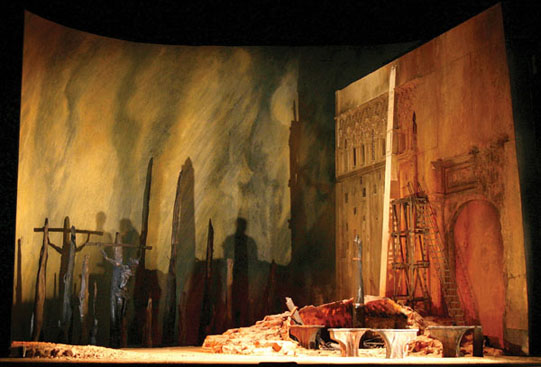
The most touching moment at this year’s Irene Sharaff Awards for theatrical costume design (March 27, Henry Hudson Theater) was when Lifetime Achievement award winner William Ivey Long read a telegram: “Thanks for helping me make Blanche the moth of our dreams and also your understanding about all my demands. Tash.” It was from the late Natasha Richardson, who had worked with Long on A STREETCAR NAMED DESIRE in 2005, and Long was quick to point out, “They were not demands – this is what designers do,” attesting to the wholly collaborative nature of his work with the star.

Natasha Richardson in A STREETCAR NAMED DESIRE (2005)
Richardson may not have been demanding but she certainly had her particular tastes. For the birthday party scene, she appeared in a rather revealing sundress in strong contrast to the more traditional, modestly covered-up, ladylike image of Blanche familiar from Jessica Tandy’s, Vivien Leigh’s and Jessica Lange’s takes on the role. This was in tune with what designer Albert Wolsky once told me about working with her. She was always drawn to a certain very youthful image of herself and, indeed, when they did MAID IN MANHATTAN together, came to him with lots of clippings from fashion magazines of California-type blondes in tight jeans and sexy wear. “But your character is supposed to be a rich Upper East Side matron!” he remonstrated, and a compromise was reached. (Richardson may indeed have been a bit presciently ahead of her time – take a look at the way THE REAL HOUSEWIVES OF NEW YORK dress.)

Nathan Lane and Faith Prince in GUYS AND DOLLS (1992), William Ivey Long’s greatest costume moment
Long, ever the industrious showman, also produced in his acceptance speech an elaborate presentation of a tree, the leaves of which bore the names of everyone who’d helped or inspired him through the years. He was introduced by Director Jerry Zaks, who claimed to be the only person who calls him “Willie” and observed that, despite his carefully cultivated preppie sartorial image, “at heart, he’s a good old boy.”

Jennifer Ikeda and Geraint Wynn Davies in WOMEN BEWARE WOMEN, costumes by Clint Ramos (photography by Carol Rosegg)
Other tributes went to Clint Ramos (the always gay giggle-inducing Young Master Award), for, among others, his staggeringly elaborate Restoration work in WOMEN BEWARE WOMEN, presented to him by wholly admiring cast member Jan Maxwell, and Sally Ann Parsons (Artisan Award), the first to work with Willa Kim’s groundbreaking dance fabric discovery: lycra spandex. Parsons’ lengthy (and that’s an understatement) acceptance speech generously mentioned, by name, every single person in her company.
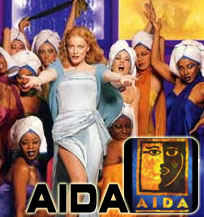
Sherie Rene Scott in AIDA (2000), costumes by Bob Crowley
The Robert L. Tobin Award for Lifetime Achievement went to Bob Crowley, presented to him by fellow feisty, funny Irishman, Director Jack O’Brien. Crowley will design the sequel to THE PHANTOM OF THE OPERA, LOVE NEVER DIES, to be set in Coney Island at the turn of the last century.
A highlight of the evening was Suzy Benziger’s eye-ravishing documentary film about Irene Sharaff (1910-93), which encompassed her achievements, from earliest work with Eva LeGallienne and on Irving Berlin’s AS THOUSANDS CHEER to THE KING AND I, AN AMERICAN IN PARIS, WEST SIDE STORY, FUNNY GIRL and, finally, MOMMIE DEAREST. Along with her canny stylization, which sifted out the absolute essence of a period, and Renaissance-rich color palette, Sharaff’s moody, dusky sketches alone were complete works of art, and Long proudly displayed a gorgeous one he had recently acquired – lucky duck – for a song at Christie’s House Sale, stressing that it was coming home with him and not being donated to the Theatre Development Fund. The God-like, problem-solving omniscience of Sharaff was evoked with the mantra that seemingly every designer chants at some problematic point, “What would Irene do?,” and Long observed “We’re afraid to get up in the morning because she set the stakes so high,”

Benziger recounted a hilarious reminiscence of once visiting costume maker Barbara Matera’s workshop at a time when three formidable designers, Florence Klotz, Theoni Aldredge and Patricia Zipprodt, all of whom had worked under Sharaff at various times, happened to show up simultaneously, sniping about each other: “What’s taking her so long?” “When is she leaving the big studio?” “Why isn’t MY dress done yet?”
Word came that Sharaff was on her way to the studio, as well and, suddenly, Benziger said, “One of the ladies remembered she had to be somewhere else immediately, another burst into tears, and the third just hid.”
Here’s part of the reason why, i.e.,
THE SHEER BRIILLIANCE OF SHARAFF
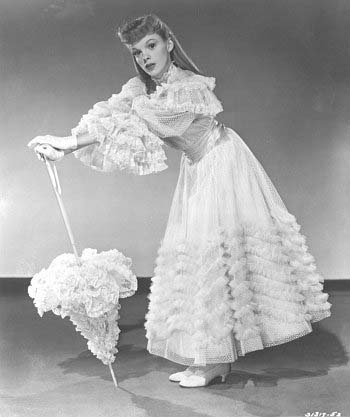
Judy Garland, MEET ME IN ST. LOUIS

NOTE: This rare original vintage photo is currently for sale on Ebay; click here to see it
http://cgi.ebay.com/JUDY-GARLAND-MEET-ME-IN-ST-LOUIS-ORIG-DOUBLEWT-PORTRAT_W0QQitemZ120405535051QQcmdZViewItemQQptZLH_DefaultDomain_0?hash=item120405535051&_trksid=p3911.c0.m14&_trkparms=72%3A1205%7C66%3A4%7C65%3A12%7C39%3A1%7C240%3A1318%7C301%3A0%7C293%3A1%7C294%3A200
No one did that most popular era of musicals, the early 1900s, better than Sharaff. A quarter of a century after MEET ME IN ST. LOUIS, she was still undisputed mistress of the epoch with HELLO, DOLLY!

Director Gene Kelly, Sharaff and Barbra Streisand confer on the set

Rita Moreno, WEST SIDE STORY 1961
NOTE: This photo is currently for sale on Ebay; click below to see it:
http://cgi.ebay.com/RITA-MORENO-WEST-SIDE-STORY-CHORUS-IN-AMERICA-OSCAR_W0QQitemZ120405590644QQcmdZViewItemQQptZLH_DefaultDomain_0?hash=item120405590644&_trksid=p3911.c0.m14&_trkparms=72%3A1205%7C66%3A4%7C65%3A12%7C39%3A1%7C240%3A1318%7C301%3A0%7C293%3A1%7C294%3A200

Ray Bolger, George Church and Tamara Geva in the “Slaughter on 10th Avenue” ballet from ON YOUR TOES (1936)

Eddie Albert and Jimmy Savo in THE BOYS FROM SYRACUSE (1938)

Gertrude Lawrence, singing “The Saga of Jenny,” in LADY IN THE DARK (1941)

Director Mervyn LeRoy and Greer Garson on the set of MADAME CURIE (1943)

Myrna Loy, Fredric March, Dana Andrews, Teresa Wright and Harold Russell in THE BEST YEARS OF OUR LIVes (1946)

Lucille Ball, ZIEGFELD FOLLIES OF 1946

Virginia Mayo in THE SECRET LIFE OF WALTER MITTY (1947), photo by Peter Stackpole for LIFE

Talk about diva vagaries: in THE BISHOP’S WIFE (1947), Loretta Young had a phobia about her famous, swanlike neck and so for her, Sharaff had to devise a special body suit worn under her garments which raised her entire shoulderline, thereby shortening that “offensive” feature.

The ballet in AN AMERICAN IN PARIS (1951) was the climax of Suzy Benziger’s documentary film

Donald O’Connor, Ethel Merman, George Sanders, Vera-Ellen in CALL ME MADAM (1953)

Judy Garland in the “Born in a Trunk” sequence from A STAR IS BORN (1954)

Gene Kelly and Cyd Charisse in BRIGADOON (1954)

Jean Simmons and Marlon Brando in GUYS AND DOLLS (1955)

Ethel Merman in HAPPY HUNTING, 1956

Deborah Kerr and Yul Brynner, THE KING AND I ((1956)

Pat Suzuki in FLOWER DRUM SONG (1958)

Elizabeth Taylor, CLEOPATRA 1961

Elizabeth Taylor in WHO’S AFRAID OF VIRGINIA WOOLF (1966): Sharaff’s transformation of the 33-year-old Taylor into the much older character of Martha undoubtedly contributed to the actress’ winning the Oscar that year.

1966

Barbra Streisand as Fannie Brice playing Baby Snooks, FUNNY GIRL (1968)

Barbra Streisand, A HAPPENING IN CENTRAL PARK (1968)

Debbie Reynolds, Patsy Kelly and George S. Irving in IRENE (1973)
Sharaff never actually worked with Joan Crawford but, amazingly, she did two Crawford pastiches 48 years apart, when Marilyn Miller played Crawford in a satirical sketch in Irving Berlin’s AS THOUSANDS CHEER in 1933

and, in 1981, with MOMMIE DEAREST

Faye Dunaway, lame’ed as Joan Crawford, in High Hieratical Hollywood Priestess Mode, MOMMIE DEAREST (1981)
THE LOVE OF HER LIFE

Mai-mai Sze
Someone who is often privately discussed but rarely formally mentioned at the Awards every year is Sharaff’s longtime companion, Mai-mai Sze (1910-92). The Peking-born Sze had a mother who was lady-in-waiting to the last Dowager Empress of China and her father was ambassador to the Court of St. James and later the United States. She was raised in London, went to the National Cathedral School in Washington D.C., graduated from Wellesley College in 1931 and was active during WWII organizing the first Chinese War Relief Committee in New York.

“China,” from the United Nations Series (1944)
Her first career was as a landscape painter and she had shows in New York, London and Paris. But her most memorable work was a drawing of her friend, Eugene O’Neill, which he liked so much he allowed it to be reproduced on book jackets, playbills and in magazines.
A Renaissance woman, she also modeled for Schiaparelli and acted on Broadway in the role of “Honorable Reader” in LADY PRECIOUS STREAM, a play by S.I. Hsiung, which opened at the Booth Theater in 1936, with costumes by Mei Lan-Fang. She wrote books: her autobiography in 1945, ECHO OF A CRY: A STORY WHICH BEGAN IN CHINA; a novel, SILENT CHILDREN (1948),;CHINA, and THE TAO OF PAINTING: A STUDY OF THE RITUAL DISPOSITION OF CHINESE PAINTING, her translation of a 15th century Chinese text which is still in use today.
She was a journalist with a column in THE NEW YORK POST and reviewed books for THE NEW YORK TIMES, and lectured about conditions in China and its people.

Photographed by Carl Van Vechten, February 12, 1940
Sze lived to be 82 and, in 1993 The New York Society Library received a bequest from the estates of both women of some 400 books. There were also bequests to the Music Pavilion of Lucy Cavendish College, Cambridge University.

Photographed by Carl Van Vechten, Dec. 29, 1935. Sze wrote to the photographer: “Thank you so much for sending the pictures – I especially like the profile. You are the only person who has ever made me feel I had one. [Plus} something of a nose!”

COPYRIGHT: davidnoh2009


